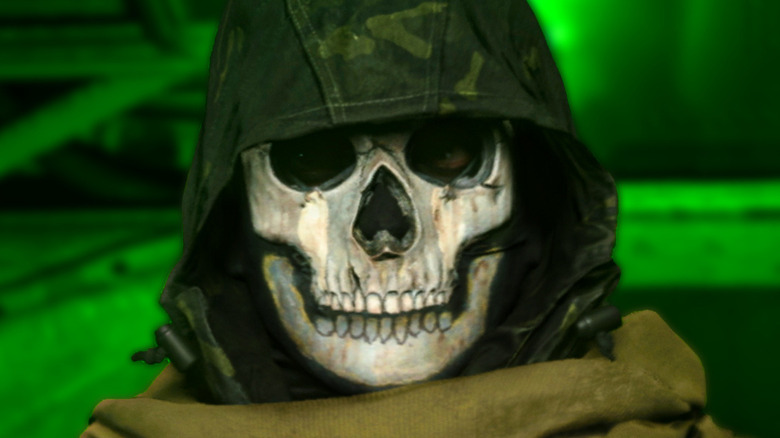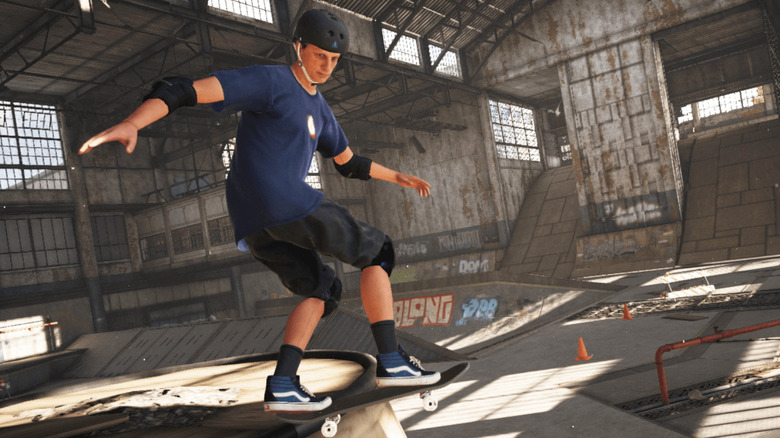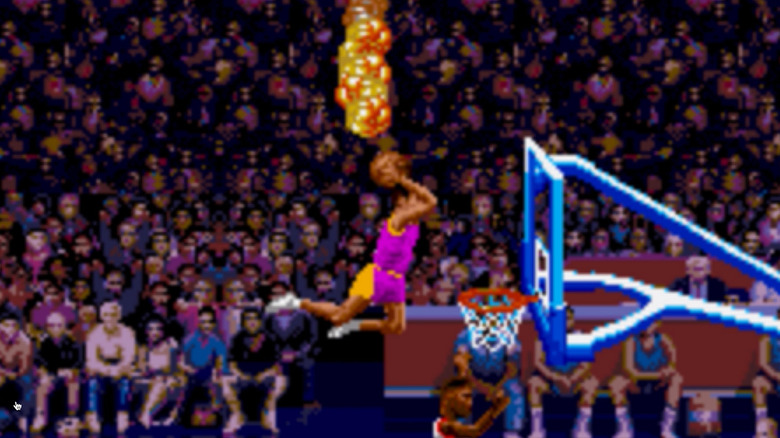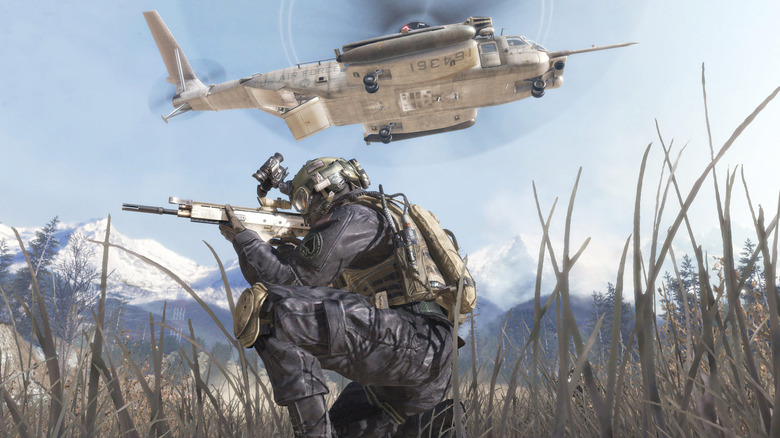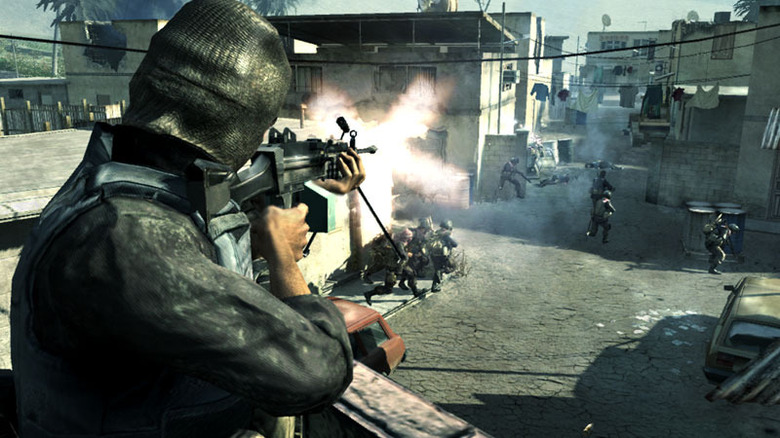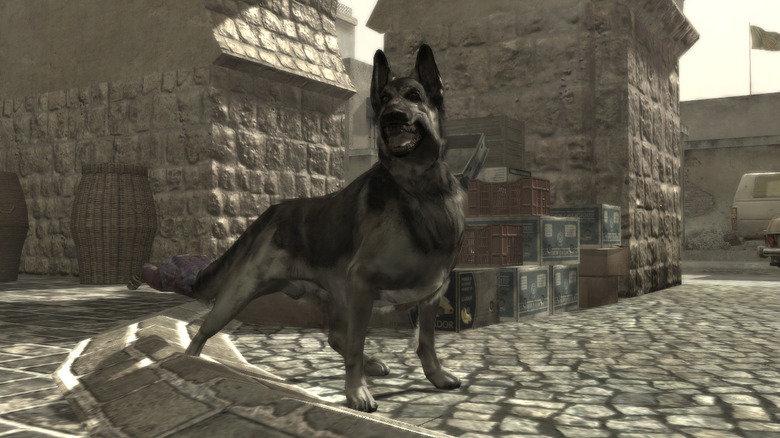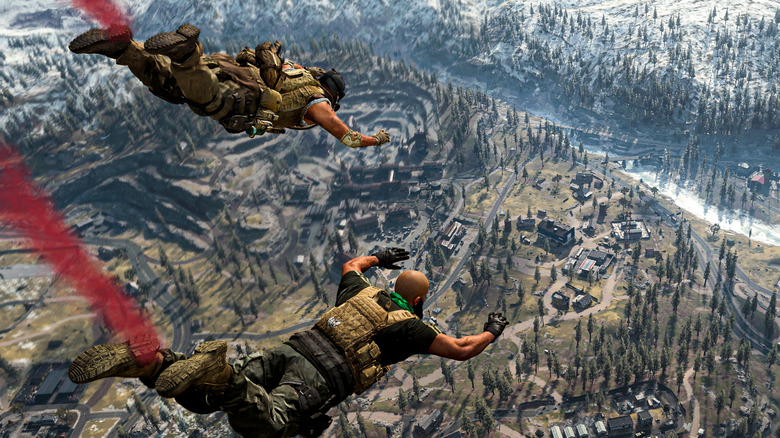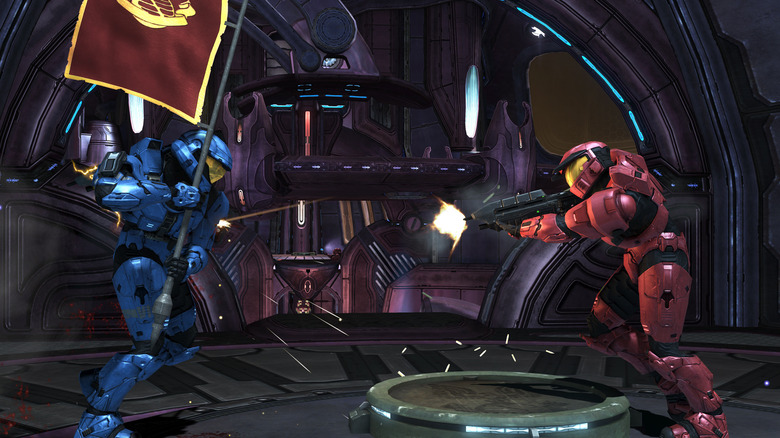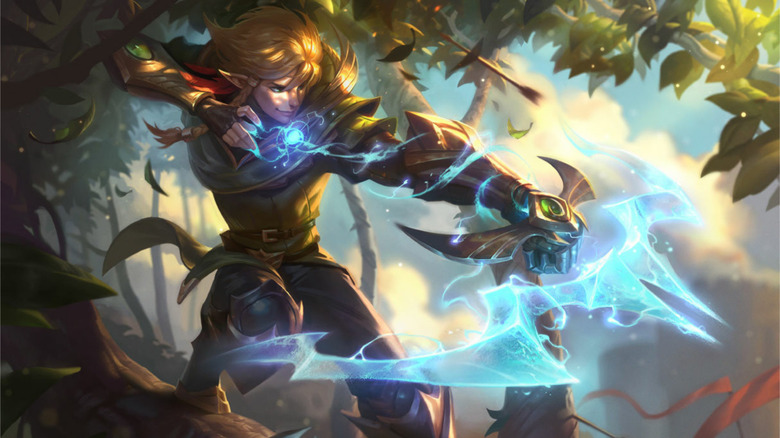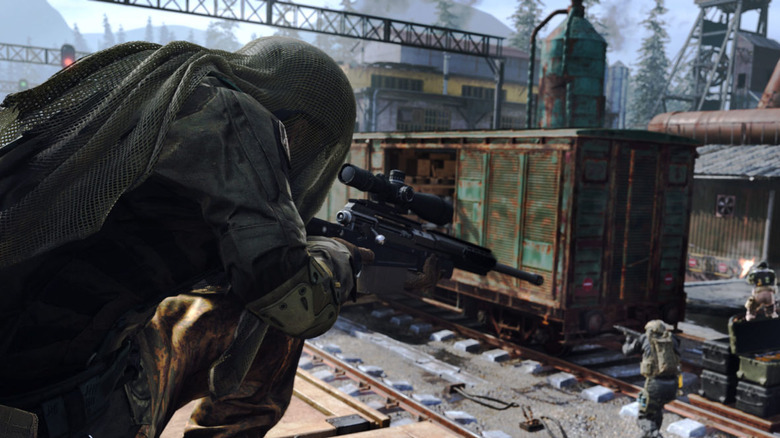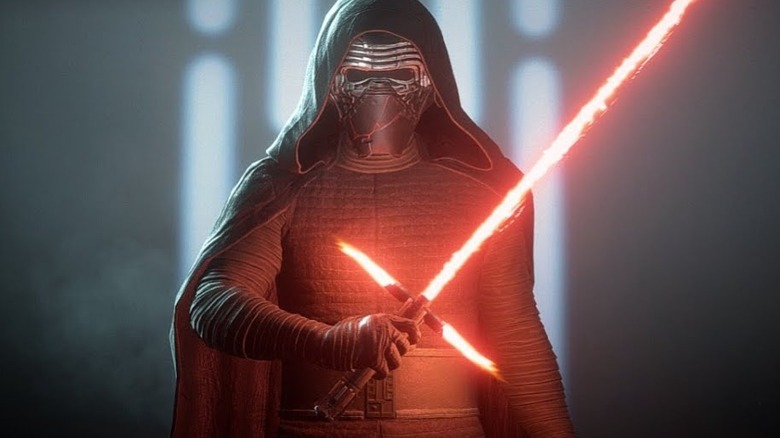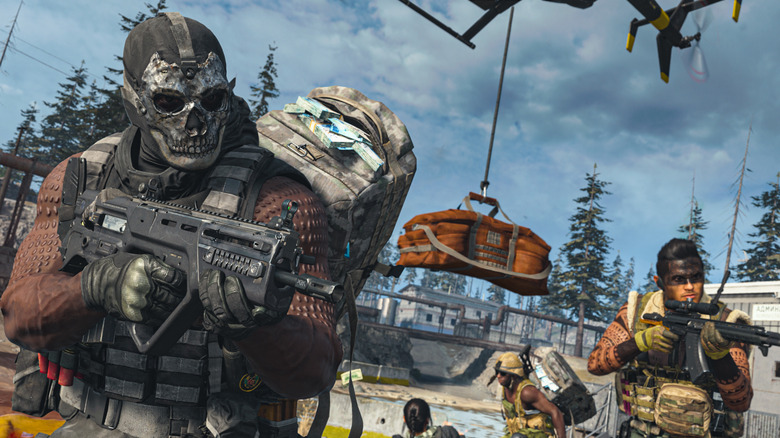The History Of Killstreaks Explained
When a player of any game gets in their zone it can be almost impossible to stop them from carrying out their each and every desire. Once on a roll, keeping up that momentum becomes the name of the game for that hot player. Traditional sports call this momentum carrying "riding the hot hand," and the concept is no different in video games. In order to simulate the cumulative momentum of getting on a hot-streak, many multiplayer competitive games have introduced killstreaks. These killstreaks give players rewards for playing well and staying on top of their game without any blemishes or mistakes.
Killstreaks have been around for so long now that they can seem like they have always existed. Practically every shooter on the market has some way of counting kills against deaths and rewards its players accordingly. However, going back into the deeper history of video games reveals that killstreaks are a modern incantation of older player reward structures.
Origins - Score Multipliers
With killstreaks evolving all across the contemporary game market, it may be surprising to some to learn that rewarding players for good gameplay dates all the way back to the very beginning of video games. Classic arcade games had one foot in the future with killstreak-like mechanics such as bonus score multipliers. For instance, "Space Invaders," released back in 1978, had Mystery Spaceships that seemed to have random score bonuses when shot down — but high-score hunters discovered that the amount of points that Mystery Spaceships granted was based on how few shots the player's ship took during that round. The more accurate the player, the more points the Mystery Spaceships granted.
The complexity of score multipliers increased over time. One of the most famous examples, the "Tony Hawk: Pro Skater" franchise, pushed combo points to the next level back in 1999. Land one skateboard trick into another to multiply combo points for the trick combination. In 2020, Twitch streamer ClintStevens took these combos to the max in the re-released "Tony Hawk Pro Skater 1 + 2" and completed a 20 million point trick with 146 tricks all combined into one.
These score multipliers suggest a similar reward structure to killstreaks; players are incentivized to play well in order to get bonuses. Where score multipliers thrive in combo-based single-player games, killstreaks apply these gameplay rewards in multiplayer games.
Origins - Power Ups
Another incarnation of killstreaks in early video games, Power Ups offered new ways to grant players bonuses for playing well. The rewards for power ups more closely resemble the killstreaks of current games than score multipliers do because they change the mechanical gameplay at its core.
Nowadays, it's a common tradition in basketball to call somebody who has made 3 shots in a row "On Fire." This comes from video game classic "NBA Jam," released in 1993, where players would first "heat up" upon making two shots in a row, and then be "On Fire" after making their third basket. "On Fire" players would dribble a basketball glowing with fire as all types of new moves were unlocked for them — they could make shots from almost anywhere on the court, bypass normal basketball rules and goaltend the rim, and play dirty by shoving other players to the ground. Overall, being "On Fire" meant that the player was nearly unstoppable.
The fun of playing with "On Fire" characters likely gave "NBA Jam" more longevity than any sports game that has ever been released. Video games in the future took notes that giving players special unlockables after achieving good gameplay makes the experience feel special.
Origins - Tangible Rewards
Stepping into the more recent era of games, the most modern form of granting players rewards based on good gameplay is in the form of tangible rewards. Tangible rewards, as opposed to score multipliers and power ups, give the player a new item or ability that isn't attached to the character's normal abilities. With powerups like "On Fire" in "NBA Jam," the core game mechanics are simply amplified for the player experiencing that power up. A tangible reward, on the other hand, refers to a coded-in mechanic not present unless unlocked through specific gameplay — they introduce items, powers, abilities, and new incentives into the gameplay.
These tangible rewards come in all shapes and sizes now, with decades elapsed since their introduction within the "Call of Duty" franchise. Games have gotten so creative that the flipside of killstreaks was invented in "Call of Duty: Modern Warfare 2" with deathstreaks. Instead of giving players a tangible reward for playing well, why not give them a tangible reward for playing poorly? Competitive multiplayer games can be a rough experience sometimes, so why should the rich always get richer? Deathstreaks are just one example of the types of gameplay incentivization that can occur through tangible rewards.
Call of Duty: Modern Warfare revolutionizes killstreaks
A blockbuster hit from 2007, "Call of Duty: Modern Warfare" changed the gaming industry's integration of tangible rewards forever. A simple system back then, players were able to call in a radar-assisting UAV after securing 3 kills without dying, call in a precision airstrike anywhere on the map after securing 5 kills without dying, and call in an AI-piloted attack helicopter after securing 7 kills without dying. This 3-5-7 set of tangible rewards for slaying the opposing team gave "Call of Duty: Modern Warfare" a kind of spice that set it apart from every other shooter on the market. Back in 2007, IGN reviewed "Call of Duty: Modern Warfare," calling it the "new standard" by which military-based shooters are judged.
The multiplayer experience of "Call of Duty: Modern Warfare" was greatly improved by its use of killstreaks for a number of reasons. First, the arcade-y nature of "Call of Duty: Modern Warfare" and its fast-paced kill-die-respawn loop was given new meaning because every life counts for their bonuses. While before, a player wouldn't care about dying after securing a few kills, now they would hang on to that life with all they could so that they could secure a killstreak. Second, being able to reign death upon enemies and provide radar support to teammates made "Call of Duty: Modern Warfare" more collaborative than prior shooters. The success of "Call of Duty: Modern Warfare" set the stage for the rest of the storied franchise's releases.
Attack Dogs
Building upon the utter success of "Call of Duty: Modern Warfare," "Call of Duty: World at War" used the same 3-5-7 tangible reward structure for killstreaks. Released in 2008, "Call of Duty: World at War" introduced one of the most terrifying installments of killstreaks with attack dogs. Dexerto ranks attack dogs as the best "Call of Duty" killstreak of all time.
Upon reaching 7 kills without dying, players could call in attack dogs. They hounded the enemy team, killing an enemy immediately after biting. One important detail, however, is that killstreaks in "Call of Duty: World at War” stacked upon themselves and calling in killstreaks could happen even after dying. So, players would get 7 killstreaks to unlock calling in attack dogs, die on purpose, and then call in the Attack Dogs upon respawning to a new 0-killstreak life. Those attack dogs would then start racking up kills in the new 0-killstreak life, counting towards the new life's killstreak. Ultimately, getting one set of attack dogs in "Call of Duty: World at War" meant that getting another set and then another set would be easier and easier.
Tactical Nuke
While "Call of Duty: World at War" simply changed up the 3-5-7 killstreak structure of "Call of Duty: Modern Warfare," "Call of Duty: Modern Warfare 2" revolutionized killstreaks once again. Instead of having a preset of 3 killstreaks to chase, "Call of Duty: Modern Warfare 2" gave players the option to choose from 3 out of 15 total killstreaks to play for each match. These ranged from the usual like UAV and Precision Airstrikes, to more powerful and exotic options like a 15-kill EMP that neutralized all electronics for the enemies, or an 11-kill player-piloted chopper gunners and AC-130 call-ins. Of course, for reaching 25 kills without dying, players could call in a Tactical Nuke, immediately winning the game. Reaching 25 kills in a row without dying is a herculean task in these competitive multiplayer lobbies. Reaching that high of a mark almost always came as a result of killstreaks stacking into each other.
Getting nukes was a badge of honor in "Call of Duty: Modern Warfare 2," and players would get a special wearable emblem for their account upon getting 10 total tactical nukes. The cultural significance of Tactical Nukes is hard to understate. Tactical Nukes completely changed the way "Call of Duty: Modern Warfare 2" was played and remembered, leaving it as an immortal installment in one of the greatest shooter franchises of all time.
Call of Duty Killstreaks Now
The popularity of arcade-style shooters with modes like Team Deathmatch and Domination have receded in light of the corresponding rise in popularity for the Battle Royale sub-genre. "Call of Duty: Black Ops 3," released in 2015, was one of the last arcade-genre "Call of Duty" titles to receive fan praise for its innovations with killstreaks. One of the community's favorites, the H.A.T.R., gave players full radar information on the whereabouts of every enemy in real-time. Instead of players getting tangible rewards only for kills, "Call of Duty: Black Ops 3" gave players tangible rewards based on score, which could be accrued through objective control, helping out teammates, or simply by killing enemies.
"Call of Duty: Warzone" pushed the storied franchise into the Battle Royale Genre and did so while integrating money-based scorestreaks instead of killstreaks. Players in "Call of Duty: Warzone" get money for each objective they complete. Those can be rewards for killing a target with a bounty on them or from simply killing anyone on the map. That money can then be traded for killstreak-like tangible rewards, giving "Call of Duty: Warzone" the best of both worlds with killstreak rewards and scorestreak flexibility.
Halo Killstreaks
The "Call of Duty" franchise popularized tangible rewards for killstreaks, and even deathstreaks, but the "Halo" franchise played their hand in a different fashion. Instead of players receiving tangible rewards for killstreaks in "Halo," the deep-voiced announcer only gives the player a smooth rendition of "Killstreak" and a shiny emblem. The Killstreak emblem, and all emblems in "Halo" games, are worth nothing more than bragging rights.
The exact names of the killstreaks and emblems have changed throughout the years for the "Halo" franchise, but 5 kills in a row has always been a "Killstreak." Getting those announcements and corresponding emblems gives the players no advantages, no vehicles to spawn in to continue their rampaging, and does not incentivize specific playstyles that maximize kill-to-death ratios. However, getting a "Killstreak" in "Halo" is still rewarding — it feels fantastic to hear "Killstreak" or "Triple Kill" over the loudspeakers after making a great play. Perhaps "Halo" shows that recognition of achievement is as powerful as providing tangible rewards for achievement.
League of Legends Bounty System
Similar to the "Halo" franchise, "League of Legends" originally only used their in-game announcer as a means of rewarding players for good gameplay. Getting 3 kills without dying in "League of Legends" unleashed the announcer to say "Killing Spree" to the whole lobby — effectively pointing a target on that player's back. These announcements would continue all the way up to an 8-kill streak. Reaching legendary status sounds great, but it comes with its own costs.
Building more into this mechanic, "League of Legends" introduced a bounty system that not only symbolically painted a target on a hot player's back, but literally gave the enemy team rewards for taking down that player on a killstreak. Gold and experience are the two most key resources to amass for champions in "League of Legends," and the bounty system gives bonus gold and experience to those that take down a player on a hot streak. Champions can accrue lots of power in "League of Legends" from all over the map, so including minion kills, tower kills, and total experience into the bounty system provided more consistent ways for teams that are behind to catch up.
This bounty system has been so successful in creating exciting games that "League of Legends" is now introducing an objective bounty system. "League of Legends" is again pushing the boundaries of tangible rewards to create new player experiences.
Killstreaks Encourage Certain Playstyles
Dissecting what killstreaks do in each individual game is fruitful, but what do killstreaks entail on a larger structural level for games and their player bases? For some in Reddit communities, killstreaks represent a system where the rich get richer. When somebody is playing well, is it really necessary to give them more bonuses to continue doing well?
Opponents of killstreaks, as cited by Redbull, also dislike that killstreaks promote 'camping', an unfun playstyle where players take as little risk as possible to make sure that they are dying as few times a match as possible. Killstreaks are, at their core, an extrapolated version of kill/death ratios, so giving players rewards for maintaining a high kill/death ratio encourages safer gameplay. Playing against or with campers is frustrating — instead of playing for the team, they would rather hide in a random corner and shoot unsuspecting passersby.
On the flip side, proponents of killstreaks argue that without them each life in these games would mean less and less. Without killstreaks accumulating for the other team as a negative result of poor gameplay decisions, how can one be expected to make better decisions over time? Without tangible rewards going to their enemies, wouldn't each player refuse to care about their kill/death ratio? Despite these differences, there is clearly enough space in the industry for games of each type to succeed, as has been shown with the contrasting examples of the "Call of Duty" and "Halo" franchises.
Most Memorable Killstreaks
Over the years, killstreaks have attracted some of the most talented players to push their limits on just how many they can slay in a row without dying across many different titles. Some older games have world records that do not seem possible to overtake, but some of the most recent multiplayer shooters have some great entries already.
In "Halo: Infinite," YouTuber Frosty completed a killstreak of 71 kills in a row. He was playing Ranked Oddball, which is the game type that generally produces these large killstreaks in "Halo" due to the rounds lasting a long time that can be dragged out between both teams. On the map Recharge, Frosty was able to flawlessly decimate his opponents, racking up more than 18,000 damage done and getting the win while setting a high mark for killstreaks in "Halo: Infinite's" short life span.
Playing "Star Wars: Battlefront 2," YouTuber pauljohn consistently releases videos setting new killstreak records for each legendary character. On Kylo Ren, pauljohn was recently able to kill 510 players in a row without dying, beating out his other characters' records by a decent margin.
Slaying at these types of rates can only happen every once in a while, but for some dedicated content creators, chasing higher and higher cumulative killstreaks is a great way to cement themselves in the history books while producing great content and showing off their incredible skills.
Killstreaks in the Future
Ever since "Call of Duty: Modern Warfare" was released back in 2007, shooter games and multiplayer competitive games have scrambled to keep innovating on ways to give players rewards based on their gameplay. "Call of Duty: Modern Warfare 2" introduced deathstreaks, giving players rewards for playing poorly. "League of Legends" introduced a bounty system, giving players a target on their back for playing well. And "Call of Duty: Warzone" cemented the scorestreaks introduced back in "Call of Duty: Black Ops 3", with their cash system.
Going forward, it would be easy to expect that games will stray away from raw slaying as the main source of tangible rewards for gameplay. There is so much more that goes into the overall strategy for shooters and competitive multiplayer games beyond just killing the other players that rewarding slaying alone feels a bit archaic. Flexibility and on-the-fly decision-making based on overall objective scoring seems to be the trend, with games like "Call of Duty: Warzone" leading the way. However, titles like "Halo" have just as easily proven that slaying is exactly what players enjoy doing, and even just shouting them out is enough to be satisfying. This debate between killstreaks and scorestreaks will continue to develop as new games are released.

